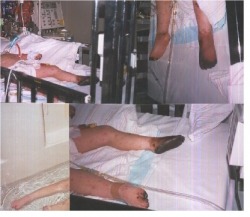Meningococcal Meningitis
Click below for an important pod cast message from CDC
| meningitis_cdc_pod_cast.mp3 | |
| File Size: | 3648 kb |
| File Type: | mp3 |
Meningococcal disease describes infections caused by the bacterium Neisseria meningitidis(also termed meningococcus). It carries a high mortality rate if untreated. While best known as a cause of meningitis, widespread blood infection (sepsis) is more damaging and dangerous. Meningitis and Meningococcemiaare major causes of illness, death, and disability in both developed and under developed countries worldwide.
The disease's host/pathogen interaction is not fully understood. The pathogen originates harmlessly in a large number of the general population, but thereafter can invade the blood stream and the brain, causing serious illness. Over the past few years, experts have made an intensive effort to understand specific aspects of meningococcal biology and host interactions, however the development of improved treatments and effective vaccines will depend on novel efforts by workers in many different fields.
The incidence of endemic meningococcal disease during the last 13 years ranges from 1 to 5 per 100,000 in developed countries, and from 10 to 25 per 100,000 in developing countries. During epidemics the incidence of meningococcal disease approaches 100 per 100,000. There are approximately 2,600 cases of bacterial meningitis per year in the United States, and on average 333,000 cases in developing countries. The case fatality rate ranges between 10 and 20 per cent.
While Meningococcal disease is not as contagious as the common cold (which is spread through casual contact), it can be transmitted through saliva and occasionally through close, prolonged general contact with an infected person. Some experts believe that smoker harbor the bacteria more than oters. So please don't let your chidren eat and drink after you or even better, STOP SMOKING !!
The most important form of prevention is a vaccine against N. meningitidis. Five serogroups, A, B, C, Y and W135 are responsible for virtually all cases of the disease in humans. The most common in the US are groups C, Y and B. However Group C causes the majority of cases in children, teens and young adulats. Two vaccines (Menveo and Menactra) are currently available in the US against four of the five strains, and a vaccine against the B strain is in development.
The disease's host/pathogen interaction is not fully understood. The pathogen originates harmlessly in a large number of the general population, but thereafter can invade the blood stream and the brain, causing serious illness. Over the past few years, experts have made an intensive effort to understand specific aspects of meningococcal biology and host interactions, however the development of improved treatments and effective vaccines will depend on novel efforts by workers in many different fields.
The incidence of endemic meningococcal disease during the last 13 years ranges from 1 to 5 per 100,000 in developed countries, and from 10 to 25 per 100,000 in developing countries. During epidemics the incidence of meningococcal disease approaches 100 per 100,000. There are approximately 2,600 cases of bacterial meningitis per year in the United States, and on average 333,000 cases in developing countries. The case fatality rate ranges between 10 and 20 per cent.
While Meningococcal disease is not as contagious as the common cold (which is spread through casual contact), it can be transmitted through saliva and occasionally through close, prolonged general contact with an infected person. Some experts believe that smoker harbor the bacteria more than oters. So please don't let your chidren eat and drink after you or even better, STOP SMOKING !!
The most important form of prevention is a vaccine against N. meningitidis. Five serogroups, A, B, C, Y and W135 are responsible for virtually all cases of the disease in humans. The most common in the US are groups C, Y and B. However Group C causes the majority of cases in children, teens and young adulats. Two vaccines (Menveo and Menactra) are currently available in the US against four of the five strains, and a vaccine against the B strain is in development.
|
Baby Phoenix was just months old when meningitis took his life.
|
Meningococcal Meningitis does not STOP at the dorm room door.Jane and Sierra requested vaccination. Jane had just lost a friend to meningitis a few years before. They were both told because they lived off campus, "They did not need the vaccine. They were not at risk."
They Both Died!! Live in Colorado! Join Sierra's Race for Meningitis every Summer |



